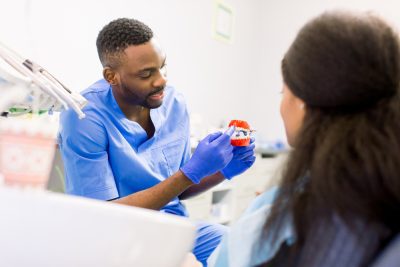Cervical cancer is a significant health concern for women worldwide, but the good news is that it is one of the most preventable types of cancer. Regular screenings and tests play a crucial role in early detection and prevention. By staying informed and proactive, people with crevixes can significantly reduce their risk of developing cervical cancer. In this article, we’ll explore the essential tests everyone with a cervix should consider to protect their health.
Understanding cervical cancer
Cervical cancer occurs in the cells of the cervix, the lower part of the uterus that connects to the vagina. It is primarily caused by persistent infection with certain strains of the human papillomavirus (HPV). While HPV infections are common and often resolve on their own, some high-risk strains can lead to cervical cancer if not detected and managed early.
Importance of regular screenings
Regular screenings are vital for detecting abnormal changes in cervical cells before they develop into cancer. Early detection through these tests can lead to successful treatment and a significant reduction in mortality rates. Here are the essential tests those with cervixes should consider:
1. Pap smear (Pap test)
The Pap smear, also known as the Pap test, is one of the most effective tools for detecting precancerous or cancerous cells in the cervix. During the test, a health care provider collects cells from the cervix to examine under a microscope.
When to start and how often:
- Pap smear screenings should begin at age 21.
- Those aged 21-29 should have a Pap smear every three years.
- Those aged 30-65 should have a Pap smear every three years or every five years if combined with an HPV test.
Why it’s important:
- Detects abnormal cervical cells early.
- Can identify precancerous changes that can be treated before developing into cancer.
- Reduces the risk of cervical cancer significantly.
2. HPV test
The HPV test detects the presence of high-risk HPV strains that can lead to cervical cancer. This test can be done simultaneously with the Pap smear (co-testing) or as a primary screening method.
When to start and how often:
- Those aged 30 and older should consider HPV testing.
- If co-testing with a Pap smear, it is recommended every five years.
- As a primary screening test, it should be done every five years.
Why it’s important:
- Identifies high-risk HPV infections.
- Helps determine the necessity of further testing or monitoring.
- Allows for early intervention and treatment to prevent cervical cancer.
Other important tests and procedures
In addition to the Pap smear and HPV test, there are other tests and procedures that play a role in cervical cancer prevention and management.
3. Colposcopy
A colposcopy is a follow-up procedure for those with cervixes with abnormal Pap smear results. During a colposcopy, a health care provider uses a special magnifying device to examine the cervix more closely. If abnormal areas are found, a biopsy may be taken for further examination.
Why it’s important:
- Provides a detailed view of the cervix.
- Helps diagnose the extent and nature of abnormal cell changes.
- Guides treatment decisions.
4. Cervical biopsy
If a colposcopy reveals suspicious areas, a cervical biopsy is performed to remove a small sample of cervical tissue for laboratory analysis. This test can determine whether the abnormal cells are precancerous, cancerous or benign.
Why it’s important:
- Confirms the presence of precancerous or cancerous cells.
- Provides information on the severity of the condition.
- Essential for planning appropriate treatment.
The role of vaccination
While screenings are critical, vaccination also plays a significant role in preventing cervical cancer. The HPV vaccine protects against the most common high-risk strains of HPV.
5. HPV vaccination
The HPV vaccine is recommended for both girls and boys to protect against HPV-related cancers. It is most effective when given before individuals are exposed to the virus.
When to get vaccinated:
- The vaccine is typically given in two or three doses over six months.
- It is recommended for preteens aged 11-12 but can be given as early as age 9.
- Catch-up vaccination is recommended for females up to age 26 and males up to age 21.
Why it’s important:
- Protects against the strains of HPV that cause the majority of cervical cancers.
- Reduces the overall prevalence of HPV infections.
- Contributes to herd immunity, protecting those who are not vaccinated.
Emotional and psychological considerations
Regular screenings and tests can be stressful for many women. It’s important to address these emotional aspects to encourage continued participation in preventive health measures.
Emotional triggers and support:
- Anxiety about test results is common; seeking support from health care providers, friends or support groups can be beneficial.
- Understanding the importance of screenings can motivate people with cervixes to overcome fears and prioritize their health.
- Counseling services and educational resources can help alleviate concerns and provide valuable information.
Why it is critical to get cervical checkups
Preventing cervical cancer is within reach through regular screenings, vaccinations and proactive health care. By understanding and utilizing these essential tests, those with cervixes can take charge of their health and significantly reduce their risk of developing cervical cancer. Stay informed, stay proactive and remember that early detection saves lives.
This story was created using AI technology.












